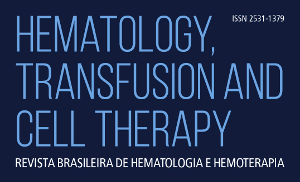ABSTRACT
Introduction: In Brazil, the sickle cell trait (SCT) has an average prevalence of 4% in the general population and 6-10% among Afro-descendants. Although SCT is highly prevalent, a large segment of the population ignores their status. The Therapeutic Guidelines prohibit the transfusion of SCT red blood cells into patients with hemoglobin disorders or severe acidosis and newborns.
Methods: This was a cross-sectional study with data from 37,310 blood donation candidates. The study included only eligible first-time donors qualified to be tested for the presence of hemoglobin S (HbS) at the Fundação Hemominas Juiz de Fora, Brazil. The variables studied were gender, skin color, age, type of donation, place of birth, blood type, result of the solubility test for hemoglobin S (HbST) and hemoglobin electrophoresis (HbEF). Statistical analysis was performed using the Q square test and the Kappa index of agreement for comparing biochemical methods. This project was approved by the National Research Ethics Committee.
Results: The analysis of first-time donor data showed that 7166 were considered eligible. A total of 127 of the 7166 donors were carriers of SCT (1.77%). Among the blood donors, 73.23% were from the local area. The HbST and HbEF were found to be 100% in concordance. Sensitivity was not tested in the present study.
Conclusions: The HbST is highly specific for identifying the HbS, but sensitivity was not tested in this study. The screening of blood donors for abnormal hemoglobins is useful, helping to detect and counsel heterozygous people. The study seeks to identify the prevalence of SCT in a region of Brazil.
Keywords:
Sickle cell trait; Blood donors; Sickle cell anaemia; Red blood cells

 Hemoglobin S identification in blood donors: A cross section of prevalence
Hemoglobin S identification in blood donors: A cross section of prevalence